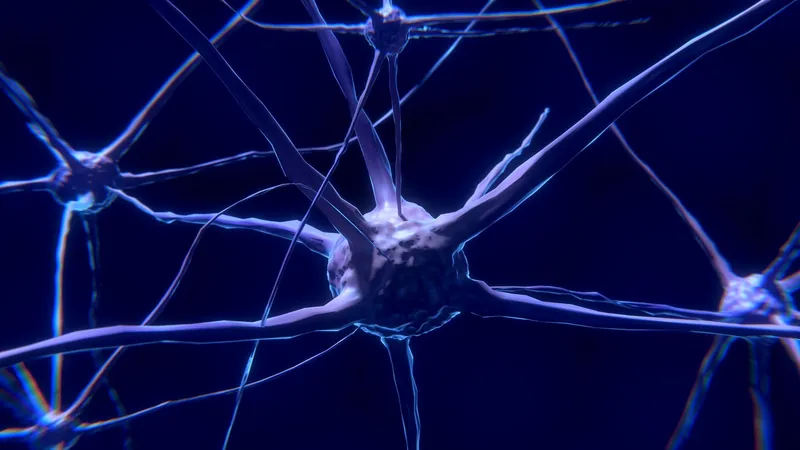
Revolutionary Wireless Antennas Use Light to Decode Cellular Communication Signals – A Game Changer in Biomedical Research!
2024-12-20
Author: Ming
Revolutionary Wireless Antennas Use Light to Decode Cellular Communication Signals – A Game Changer in Biomedical Research!
In an astonishing breakthrough, MIT researchers have developed a revolutionary biosensing technique that eliminates the need for wires to monitor cellular electrical signals. Biomedical research often relies on wired devices to study cell communication, crucial for diagnosing and treating conditions like arrhythmia and Alzheimer’s disease. But conventional wired setups limit the number of recording sites, restricting the depth of information gathered about the complex interactions within living cells.
The new technique employs tiny, wireless antennas that harness light to detect minute electrical changes in the surrounding liquid environments. These remarkable antennas measure just one-hundredth the width of a human hair and leverage minute shifts in light scattering to obtain real-time data about the electrical signals exchanged between cells. The innovation boasts an impressive durability, allowing for continuous recordings exceeding 10 hours.
“This innovative approach offers high throughput and spatial resolution in monitoring cell electrical activity, which has been a longstanding challenge,” explains Benoît Desbiolles, a lead author and former postdoc at the MIT Media Lab. He emphasizes the importance of creativity in tackling existing limitations in biosensing technologies.
The research team, including scientists and former students from the Media Lab, has published their findings in the journal Science Advances. Senior author, Deblina Sarkar, an assistant professor in the Media Lab, adds that "organic electro-scattering antennas" (OCEANs) could open new avenues for understanding cell biology and tracking the effects of various therapeutics.
The Mechanisms Behind OCEAN Technology
The researchers set out to create a hassle-free biosensing device devoid of cumbersome wires. They initially experimented with a polymer called PEDOT:PSS, aiming to utilize gold nanoparticles to scatter light. Surprisingly, they found that it was the polymer itself that produced the signal, leading them to enhance the design of the OCEANs to capitalize on this discovery.
When electrical activity occurs nearby, the polymer alters its chemical configuration, subsequently changing its refractive index and how it scatters light. Researchers can shine light onto the OCEANs; the intensity of the scattered light varies directly with the electrical signals present, giving an accurate reading from multiple sites simultaneously.
Innovation in Chip Fabrication
The precision of creating these antennas is key to their function. The team employs advanced fabrication techniques with a focused ion beam, crafting numerous nanoscale holes into optically transparent materials. By filling these holes with polymer precursors, they can grow mushroom-shaped antennas that are both efficient and scalable.
This innovative fabrication technique is rapid, enabling the production of chips with millions of antennas in a single process. Notably, OCEANs are sensitive enough to detect electrical signals as weak as 2.5 millivolts, significantly lower than typical neuronal communication signals, which hover around 100 millivolts.
Future Directions and Applications
Looking ahead, the researchers aim to implement OCEAN technology in live cell cultures and modify the antennas for better penetration of cell membranes—an enhancement that could dramatically improve signal detection precision. They also plan to explore the integration of OCEANs with nanophotonic devices, which could usher in a new era of optical sensors to monitor biological processes in real time.
The implications for this technology could extend far beyond basic biological research: potential applications range from improving diagnostics and treatments in clinics to exploring innovative therapies for various diseases. As this technology matures, it may just redefine how we understand and manipulate biological systems at the cellular level. Stay tuned for what might be an unprecedented leap in biomedical engineering!



 Brasil (PT)
Brasil (PT)
 Canada (EN)
Canada (EN)
 Chile (ES)
Chile (ES)
 España (ES)
España (ES)
 France (FR)
France (FR)
 Hong Kong (EN)
Hong Kong (EN)
 Italia (IT)
Italia (IT)
 日本 (JA)
日本 (JA)
 Magyarország (HU)
Magyarország (HU)
 Norge (NO)
Norge (NO)
 Polska (PL)
Polska (PL)
 Schweiz (DE)
Schweiz (DE)
 Singapore (EN)
Singapore (EN)
 Sverige (SV)
Sverige (SV)
 Suomi (FI)
Suomi (FI)
 Türkiye (TR)
Türkiye (TR)